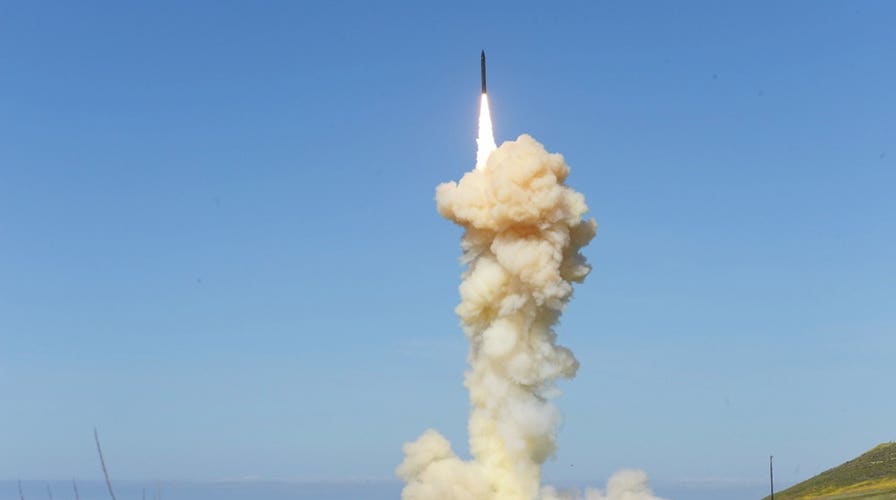Fox News Flash top headlines for Dec. 16
Fox News Flash top headlines for Dec. 16 are here. Check out what's clicking on Foxnews.com
The Pentagon fired off a new prototype conventionally-configured, ground-launched ballistic missile as part of a broader effort to increase medium-range attack options and further fortify deterrence efforts.
“The test missile exited its static launch stand and terminated in the open ocean after more than 500 kilometers of flight. Data collected and lessons learned from this test will inform the Department of Defense's development of future intermediate-range capabilities,” a DoD statement said.
The missile launch, which took place Dec. 12 at Vandenberg Air Force Base, Calif., is significant in a number of key respects. First, as specified by the Pentagon statement, the missile firing represents a deliberate effort to bolster U.S. intermediate range attack weapons, a rapid development which has been underway following the collapse of the U.S.-Russian INF Treaty.
The INF Treaty, previously violated by Russia, collapsed earlier this year, prompting the U.S. to develop a new sphere of medium range weapons; the treaty previously restricted medium-range conventional weapons as a way to better reassure both Russia and NATO that attacks on the European continent would not be likely, or even possible in some respects. A medium-range 500-to-600km cruise missile does allow Russia to hold a large number of major European cities at risk of conventional missile attack. In like fashion, these missiles can hold key Russian targets at risk from Europe.
Northrop Grumman, a key industry participant in the prototype testing, released a statement saying their involvement in the process is intended to help the Pentagon fast-track its development on these weapons. The test demonstrated “Northrop Grumman’s capability for rapid development and launch in support of urgent requests from the Department of Defense,” the company statement said.
NAVY PREPARES ITS NEW FORD-CLASS CARRIERS FOR F-35C STEALTH ATTACK

In this photo provided by the Missile Defense Agency, the lead ground-based Interceptor is launched from Vandenberg Air Force Base, Calif., in a "salvo" engagement test of an unarmed missile target Monday, March 25, 2019. (Missile Defense Agency via AP)
This most recent tests follows a related test-firing in Aug. of this year wherein the Pentagon shot-off a land-fired variant of the well-known Tomahawk missile. This test firing, which involved an adaptation of the maritime-centric Tomahawk weapon, also fired at intermediate ranges of approximately 500km.
Block IV Tomahawks are well known for GPS targeting accuracy, long-range precision, a two-way data link and an ISR-oriented "loiter" technology enabling commanders to see video of battle damage or surveil targets in flight. Firing this from land naturally brings new attack options.
An ability to fire 500km land-fired cruise missiles brings a number of substantial implications, the first and foremost of which is introducing a counter weapon, or deterrent, to Russia’s well-documented testing of medium-range land-fired missiles in violation of the INF treaty. The August test marked the first time the U.S. fired a weapon of this range since stepping back from the INF treaty.
Both of these weapons could open up offensive attack nuances, for instance, should there be a need to attack Russian force concentrations massing in or near Eastern Europe. In this scenario, a land-based cruise missile would offer advantageous strike possibilities. These weapons could also enable attacking forces to hit enemy targets from safer stand-off distances.

